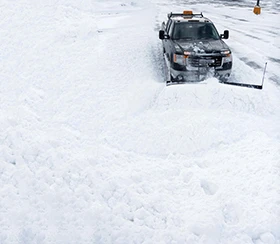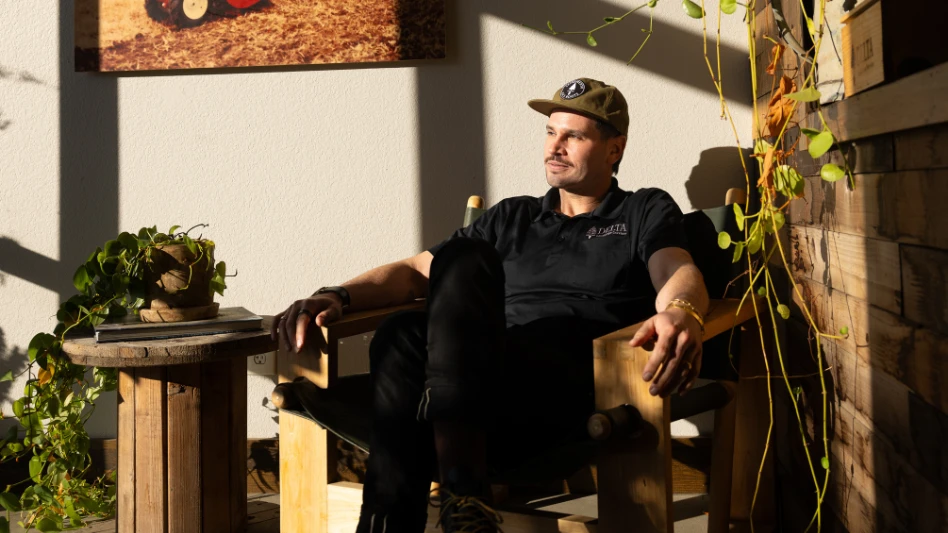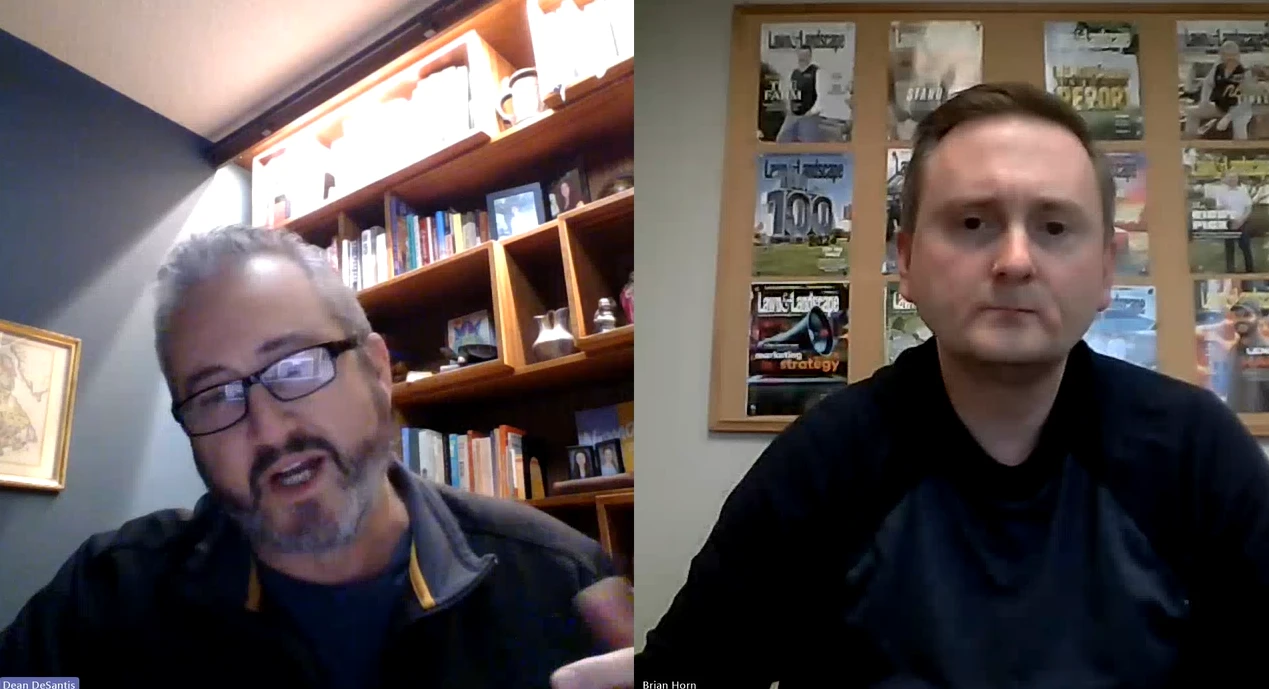
Kevin Gilbride is not used to being the new guy in the room, let alone a newcomer in a room full of people – lawyers, nonetheless – who he doesn’t know, and who don’t know him.
But that’s where the former Snow Magazine publisher and current executive director of the Accredited Snow Contractors Association (ASCA) found himself about a year ago. Gilbride was invited to attend a tort-reform conference to receive a frank, crash course on what it was going to take for a fledgling association to facilitate major change on how the industry deals with baseless slip-and-fall claims – a plague that costs contractors and insurance companies millions of dollars each year.
“You could say I was a bit out of my comfort zone,” Gilbride says. “But that’s not really a bad thing. I mean, you take a look at the inroads we’ve made as an association, the new relationships we’re fostering and some of the change that we’re beginning to see and it’s all come from taking our industry – as a whole – out of its collective comfort zone.
“Change isn’t always a process that we like to engage,” he adds. “But you’ve got to remember, change is a good thing… and it was time for our industry to experience some real change.”
Gilbride laughs when asked how many elevator speeches he’s given over the last year exalting the ASCA’s mission, the merits of membership and the virtues of committee involvement.
“I’ve spent the better part of the last decade in and around the professional snow removal industry,” he says. “I thought I knew a lot. But the last year has really opened my eyes to many of the deeper issues this industry faces. Sure, this industry faces a lot of challenges, but none of them are insurmountable.
“The last year also gave me a newfound appreciation for just how many people really want change for our industry,” he adds. “So much so that they’re more than willing to volunteer their time –in many cases, time from already stretched schedules – to play a significant role in that change.”
I’m going to play devil’s advocate for a moment. When you look at how the professional snow removal industry breaks down, nearly three-quarters of contractors are snow-only landscape contractors, construction/pavement guys or some other closely related service-oriented outfit. When you look at those individual industry segments, there are a lot of representative associations within those groups. How is the ASCA different and why should snow contactors take notice and, more importantly, get involved? There are a couple of things that differentiate the ASCA. We are exclusively focused on the snow and ice management operations of their businesses and the risks associated with that portion of the business. In doing so, we are taking a completely different approach to this.
This industry -- which, granted, is often the most profitable portion of their businesses -- also carries the most risk. As we all know, the majority of that risk stems from slip-and-fall lawsuits. It’s apparent that, as an industry, we cannot change these trends from within.
Therefore, the ASCA is focusing its energies on changing the external factors so that we might influence the outside world to view our industry differently.
Launching an association is no small feat. What’s been the biggest challenge for the fledgling ASCA? What’s been your biggest challenge as the group’s executive director? Frankly, it’s like launching any new business venture.
We are short on people and have a many tasks to accomplish. We needed industry participation to get started and generate momentum. Then, we needed to lay the association’s groundwork.
This process started with developing a draft set of industry standards. We couldn’t move ahead with education and ISO certification without those.
And I’ll admit, the time it took to get these standards to where we needed them was the most frustrating. … However, having a finalized set of industry standards – the first for the professional snow and ice management industry – has been an extremely rewarding experience.
I think the biggest challenge has been communication, at least on my part.
We have been working extremely hard, gaining traction in Congress, getting the standards done, and now completing our ISO program.
In working on all of that, sometimes people will wonder what the heck I am doing.
Why haven’t they heard from me? I think it will be better now that we have the programs in place.
What impact did the recent low-snow winter have on the association’s first formative year? Great timing, right? We launched the ASCA and there was all of this positive momentum and excitement from people in the industry… how they could get involved and how soon they could become members.
Then it didn’t snow and, I suspect, contractors were more focused on making ends meet and keeping their operations afloat.
So I’d say it probably stymied the initial membership surge we were hoping for early on.
It certainly influenced when folks joined. Many people indicated they were joining, but didn’t join until the spring when revenues from their other businesses kicked in.
You have a pretty impressive lineup of industry leaders serving on various ASCA committees? How difficult was it to get them to volunteer time for committee work? It wasn’t difficult at all, actually. The difficult thing is communicating the vision. We are not approaching this like others have in other industries, or like this industry has in the past. Once they heard the vision, they jumped on immediately.
Over the last year, how have you managed and, perhaps more importantly, maintained the momentum of the industry leaders who were working on ASCA committees? The committee members have passion.
They know where we are going and what we need to do to get there. They are amazing at giving their time.
I have led all of the committees to-date, so I think structure helped. That being said, some of the committees have been more engaged, simply because of what we needed to do.
For example, Industry Standards has been the most active. They had to be, we couldn’t make any significant forward progress without those. Membership, on the other hand, had to wait a bit because we needed to get our “product” ready, so to speak.
As the ASCA’s main representative, you really left your snow industry comfort zone over the last year to network with lobbyists, small-business groups and other allied-industry associations. Why did you feel this was necessary? First off, that has been an incredibly rewarding experience. I haven’t had to go to conference where I didn’t know anyone for 15 years. I got to get out my comfort zone, as you say, but also I was exposed to a lot of new concepts and ideas.
This was necessary because this industry can do all it wants internally, but until the outside world recognizes what our industry is about and what we do, then the things that hold our businesses back will never change.
If outside influences are going to manage our industry, why not go outside and show them how to manage it the right way. This way, we control the outcome. Look at what happened in Massachusetts. They enact a law that states an owner has to take reasonable care of their property in a reasonable timeframe. If we had a louder voice at that time, I believe, at the very least, we could have added that consumers also have to take reasonable care.
Insurance was an important motivator in creating the ASCA. Tell me a little about the ASCA’s partnership with Mills Insurance. It’s a great partnership because they share our vision. First, they are experts in the snow industry and they, too, realized that to make significant change we’d need to influence change from outside the industry.
Second, they are extremely active in supporting the ASCA efforts…they helped with the industry standards, with our educational programming. They are as much an advocate for the snow contractor as ASCA is.
Walk me through the process of establishing industry standards. You used the right term. It was a process. It was the first thing we knew we needed to accomplish as an organization. The Industry Standards Committee came together pretty quickly because there were a number of industry leaders interested in serving on that committee. The process began in September with a conference call. We all got to know each other and I laid out the vision for the standards. We agreed we would take it one step at a time, and we laid out the areas in which we needed written standards.
Once that was agreed upon, we started to discuss each individual area. We took one area the first week and talked about it. I then put in writing what we discussed and sent it out to the committee. Then it would come back for clarification, revision – or even further research -- and then be reviewed again until we got to where it needed to be. Then we moved on to the next area and process started all over again. When we first started we were meeting every other Monday for an hour. By late October we were meeting every Monday for an hour. It was a daunting task that required a lot of time and effort from committee members.
Connect the dots for me. How will industry standards influence the frequency of frivolous slip-and-fall claims? That is more of a complicated than you think. I see it as an evolution. First I see it coming into play during the deposition phase of a slip-fall lawsuit. Snow contractors will be asked if they abided by “best practices.” In the past, most contractors testify that they do, but then the plaintiff brings forth an expert witness who refutes that claim because there are no written, established best practices for snow and ice management. So then the judge or jury is left to determine what the best practices are… and we don’t want that. Industry standards alleviate that need for interpretation.
Now, once you marry the ISO certification process into this, which is based on the industry standards, plaintiff’s attorneys will have a decision to make. It won’t take long for ISO-certified snow contracts to gain the reputation that they always have their documentation in order, as well as training and all of the other processes they need. These are the things that plaintiff’s attorney beat contractors up with in these lawsuits. Plaintiff’s attorneys are business people as well. They take a large percentage of the settlements on these cases. If they don’t see the case as being one they think they can win, then they are less apt to take the case. It’s a simple business decision for them.
Finally, once we have traction on this and more data to prove contractors that do it right are less risky, we will use that to influence legislation.
Do you ever see an end to these lawsuits? Unfortunately, I don’t. I do see contractors who are ISO certified being protected. But I don’t see them going away altogether.
A lot of people recognize the ISO designation as having to do with manufacturing… especially large-scale manufacturing. How is this applicable to a service-oriented business like snow and ice management? ISO is all about processes and procedures to manage your product quality. It is that simple. Yes it is strong in the manufacturing community. The people at ANSI are excited that we, as a service industry, are taking it on because they are well aware that there is a stigma on them that they are manufacturing. Service is a sector they have not been successful in, mostly because the service industry doesn’t fully understand its value. It is definitely not just for manufacturing.
Okay, so if I’m a snow contractor how does going through an ISO audit benefit me? First, the insurance product through Mills is going to require it to get the best insurance rates. This is a big win, as you can see savings there. Second, in time, plaintiff’s attorneys are going to recognize this and be hesitant to file slip-and-fall claims against certified contractors. The number one reason these suits are settled or are lost is because of lack of documentation. ISO certified companies will have their documentation and attorneys will know this. Third, savvy contractors are going to use this to grow their sales.
Describe what the ASCA will look like in five years, in 10 years? Hopefully we’ll have more staff. I envision an organization that continues to fight for what is right. In five years, I can see the world looking at ISO certification as the key to success in the snow industry.
We need to continue to monitor the program. Make changes where they are needed. Adapt to technology. That will be a key function to the organization.
I see us making progress on the legislative side. In five years I hope that we have made positive legislative changes based on everything else we are doing. This needs to be done mostly at the state level. I hope to be the guy leading that charge to change the laws, and having a team that is managing the ship, which includes monitoring ISO and standards, creating and supply the latest in education.
Ten years from now, we will be facing different issues. I hope at that point we are defending legislation that we have helped create, continuing to raise the bar on professionalism and representing our industry in the greatest light to those outside.
The author is editor at Snow Magazine. He can be reached at mzawacki@gie.net.

Explore the July 2012 Issue
Check out more from this issue and find your next story to read.
Latest from Lawn & Landscape
- Wilson360 adds Daniel Grange as new consultant
- Batman and business
- CH Products releases new tree stabilizer
- Savannah Bananas founder Jesse Cole to speak at Equip Exposition
- Catch up on last year's Benchmarking report
- Davey Tree promotes Kevin Marks as VP of Western operations
- Bobcat Company names 2025 Dealer Leadership Groups
- Green Lawn Fertilizing/Green Pest Solutions awards employee new truck for safe driving





